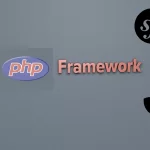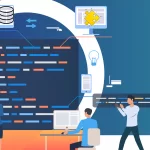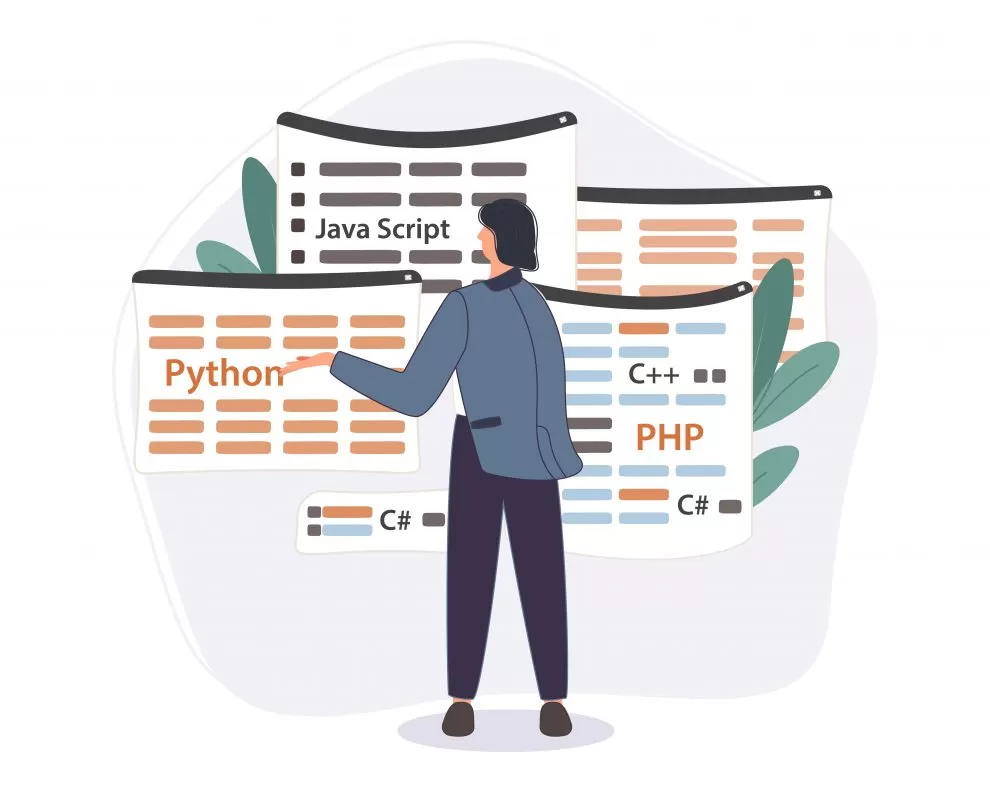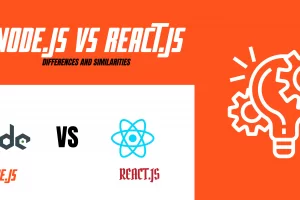In today’s rapidly evolving technological landscape, the mastery of Backend Developer Skills is of paramount importance. As the backbone of any web application, backend development is responsible for server-side operations, database management, and ensuring seamless functionality. This blog post is dedicated to exploring and understanding the fundamental Backend Developer Skills that are not only necessary but also pivotal for aspiring and seasoned developers to thrive in this dynamic field.
The world of web and application development is driven by complex systems, and at the heart of these systems lies the backend. It’s where the magic happens—the logic, the algorithms, and the data processing that power the frontend experience. Whether you’re developing an e-commerce platform, a social networking site, or a financial application, the backend is what makes it all come together and function smoothly.
Understanding the essential Backend Developer Skills is like having a toolbox filled with the right instruments. Each skill is a tool that equips you to navigate the intricate web of server-side operations and data handling. From programming languages to databases, from APIs to web servers, and from security to performance optimization—every skill adds a layer of proficiency and expertise to your toolkit.
Who is a Backend Developer?
A professional in the realm of web development, a Backend Developer is a specialized software engineer entrusted with the construction and management of server-side components within web applications and software. This encompasses the core computational logic, databases, APIs, and essential infrastructure that empower the application’s functionality. Every time a user engages with a website or application, the frontend forwards requests to the backend. Here, the server undertakes the task of processing these requests, fetching or modifying data, and furnishing the necessary information to be exhibited on the frontend.
At the crux of their duties lies the efficient management of databases, crafting APIs for seamless communication, implementation of business logic, ensuring robust application security, optimizing performance, and proficiently collaborating through version control systems. Backend Developer Skills come to the fore in guaranteeing applications run with precision, security, and consistency. Their expertise lays the foundation for web applications, ensuring a seamless and captivating user experience.
In summary, a Backend Developer operates as the unseen architect, meticulously constructing the structural framework that propels the user interface and shapes the user experience. The frontend’s smooth functioning owes its credit to their adept handling of data, request processing, and meticulous attention to application security and performance, underscoring their indispensable role in the expansive domain of web development.
Proficiency in Backend Programming Languages
Backend Developers possess expertise in various programming languages specifically tailored for server-side development. These languages equip them with the necessary tools to handle complex operations, manage databases, and ensure smooth interactions between the server and client-side components of an application. Here are some commonly used backend programming languages:
Python:
Python is favored for its simplicity, readability, and versatility. It’s widely used for backend development, especially in web frameworks like Django and Flask. Python simplifies complex tasks, making it an excellent choice for rapid development.JavaScript (Node.js):
Traditionally known for frontend development, JavaScript has gained popularity on the server-side through Node.js. Node.js allows developers to use JavaScript for backend tasks, facilitating efficient event-driven and non-blocking I/O operations.Java:
Renowned for its robustness and platform independence, Java is a staple in enterprise-level backend development. It’s often used in combination with frameworks like Spring or Hibernate.Ruby:
Ruby, coupled with the Ruby on Rails framework, offers a streamlined and efficient way to build web applications. It emphasizes simplicity and productivity, making it a favorite among startups and small to medium-sized projects.PHP:
PHP is a server-side scripting language commonly used for web development. It’s easy to learn and deploy, making it a prevalent choice for backend development in various content management systems like WordPress and Joomla.C#:
Developed by Microsoft, C# is widely used in backend development, particularly for building applications on the .NET framework. It’s known for its performance, scalability, and seamless integration with Windows-based systems.Go (Golang):
Go, also known as Golang, is gaining popularity for its efficiency and concurrency features. It’s used for backend development to create scalable and high-performance applications, particularly in cloud-based environments.
Understanding the strengths and use cases of these backend programming languages allows Backend Developers to choose the most suitable tool for a given project. It’s essential to stay updated with the latest advancements and trends in these languages to leverage their full potential and enhance backend development efficiency.
Also Read: Top 10 Most Common Node.js Developer Mistakes
Proficiency in Widely Used Frameworks
In the realm of backend development, having a solid grasp of popular frameworks is paramount for creating efficient, scalable, and maintainable web applications. Frameworks provide a structured foundation, offering pre-built modules, libraries, and tools that streamline development and help overcome common challenges.
Django (Python): Django is a high-level Python framework that emphasizes rapid development, clean and pragmatic design, and reusability of components. It follows the “Don’t Repeat Yourself” (DRY) principle, promoting efficiency and maintainability. With features like an ORM (Object-Relational Mapping), authentication, and an admin interface, Django is ideal for building robust web applications.
Express.js (JavaScript – Node.js): Express.js is a minimalistic and flexible Node.js framework that simplifies the creation of server-side applications and APIs. It’s widely appreciated for its middleware architecture, allowing developers to add various features and functionality seamlessly. Express.js is excellent for building fast and scalable network applications.
Ruby on Rails (Ruby): Ruby on Rails, often referred to as Rails, is a powerful and opinionated framework written in Ruby. It follows the convention over configuration (CoC) and don’t repeat yourself (DRY) principles, promoting simplicity and productivity. Rails is renowned for its speed of development, making it a preferred choice for startups and MVP (Minimum Viable Product) development.
Spring (Java): Spring is a comprehensive and modular Java framework that simplifies the development of complex, enterprise-grade applications. It offers a wide range of features such as dependency injection, aspect-oriented programming, and built-in security mechanisms. Spring is widely adopted for building scalable and robust Java-based backend systems.
Laravel (PHP): Laravel is a PHP framework known for its elegant syntax and developer-friendly features. It provides tools for tasks like routing, authentication, caching, and more, allowing for rapid application development. Laravel’s focus on developer experience and expressive code makes it a favorite among PHP developers.
Understanding Data Structures and Algorithms in Backend Development
Data structures and algorithms are fundamental concepts for any backend developer. They form the backbone of efficient and optimized code, allowing developers to solve complex problems and build scalable applications. Let’s delve into the importance and relevance of data structures and algorithms in the realm of backend development.
Data Structures
Data structures are essential for organizing and storing data in a way that enables efficient access and modification. They serve as the building blocks for designing algorithms and optimizing code. Here are some key data structures that every backend developer should be familiar with:
Arrays:
Collections of elements with quick access using indices.Linked Lists:
Sequences of nodes, vital for dynamic memory allocation.Stacks and Queues:
Essential for managing and processing data.Trees:
Hierarchical structures for efficient searching and data organization.Graphs:
Represent relationships between entities, pivotal in various applications.
Algorithms
Sorting Algorithms:
Essential for arranging data.Searching Algorithms:
Vital for efficient data retrieval.Graph Algorithms:
Crucial for analyzing and processing graphs.Dynamic Programming:
Solving complex problems by breaking them into simpler subproblems.Recursion:
Technique where a function calls itself, useful for problem-solving.
Understanding these concepts is imperative, enabling backend developers to write optimized and scalable code. Continuous learning and practical application are key to success.
Understanding Version Control Systems (VCS)
A Version Control System (VCS) is an essential tool for tracking changes and managing different versions of software projects. It allows developers to collaborate efficiently, providing a systematic way to:
Track Changes:
VCS tracks every modification made to the codebase, allowing developers to see who made the changes and what was altered.Revert to Previous States:
Developers can revert to earlier versions of the code, aiding in identifying and fixing bugs.Work in Parallel:
Multiple developers can work on different branches simultaneously, merging their changes later.Collaborate Effectively:
VCS facilitates seamless collaboration, preventing conflicts and ensuring a cohesive development process.
There are two main types of VCS:
Centralized Version Control System (CVCS):
A central server stores the repository, and developers check out code to work on it. Example: SVN (Subversion).Distributed Version Control System (DVCS):
Each developer has a complete copy of the repository, allowing full access to the history and enabling offline work. Example: Git.
Git, a widely used DVCS, has gained immense popularity for its speed, flexibility, and robust branching capabilities. It has become the standard for version control in the software development industry.
Understanding and utilizing VCS, particularly Git, is crucial for modern development workflows, enabling efficient collaboration and effective management of codebases.
Understanding APIs (Application Programming Interfaces)
APIs (Application Programming Interfaces) are essential tools that enable different software systems, applications, or services to communicate with each other. They define the methods and data formats that applications can use to request and exchange information, acting as intermediaries that allow seamless interaction between various components.
Communication Bridge:
APIs act as bridges, allowing different systems to interact by defining a set of rules and protocols.Data Exchange:
APIs facilitate the exchange of data between different software systems, enabling the utilization of functionalities and features.Request and Response:
Typically, an API call involves a request from a client (e.g., a web application) to a server and a response back with the requested data or action.RESTful APIs:
Representational State Transfer (REST) is a common architectural style for designing networked applications. RESTful APIs use standard HTTP methods (GET, POST, PUT, DELETE) for communication and are prevalent in modern web development.Authentication and Security:
APIs often require authentication to ensure secure data exchange, using mechanisms like API keys, OAuth tokens, or other authentication methods.Documentation:
API providers offer comprehensive documentation that defines the endpoints, request formats, response formats, authentication requirements, and usage examples.
Understanding APIs and how to effectively utilize them is fundamental for modern software development, enabling the integration of diverse services and the creation of powerful, feature-rich applications.
Also Read: Best Backend for React in 2024
Understanding Databases and Caching
Databases
Databases are organized collections of structured information or data, typically stored electronically in a computer system. They allow for efficient data retrieval, insertion, and management. Key points include:
Data Organization:
Databases store data in structured formats, enabling organized storage and easy retrieval using queries.Types of Databases:
Databases can be relational (e.g., MySQL, PostgreSQL), NoSQL (e.g., MongoDB, Redis), or NewSQL, each with its specific use cases and advantages.ACID Properties:
Transactions in databases follow ACID (Atomicity, Consistency, Isolation, Durability) properties, ensuring reliability and data integrity.
Caching
Caching involves storing frequently accessed data in a temporary storage area to reduce response time and enhance performance. Key points include:
Improving Performance:
Caching helps in serving requests faster by retrieving data from a cache rather than fetching it from the original source.Cache Invalidation:
Managing cache invalidation is crucial to ensure that outdated or incorrect data is not served.Types of Caches:
Caches can be in-memory caches (e.g., Redis, Memcached) or distributed caches, each offering speed and efficiency benefits.
Understanding databases and caching is vital for backend developers, enabling efficient data management, retrieval, and optimized application performance.
Problem-Solving in Software Development
Problem-solving is a core skill for software developers, involving the ability to analyze, break down, and solve complex problems efficiently and effectively. Key points include:
Understanding the Problem:
Developers need to comprehend the problem’s requirements and constraints before attempting a solution.Algorithmic Thinking:
Applying algorithmic thinking involves breaking down problems into smaller, solvable parts using defined steps and logical approaches.Efficient Coding:
Writing clean, efficient, and maintainable code is crucial to solving problems effectively and with minimal resources.Testing and Debugging:
Rigorous testing and debugging are essential to identify and fix errors in the code, ensuring the solution works as intended.Optimization:
Optimizing code for speed, memory, or other metrics is a critical aspect of problem-solving to enhance performance.
Communication and Interpersonal Skills in Software Development
Effective communication and strong interpersonal skills are vital for software developers to collaborate, understand client needs, and work well within a team. Key points include:
Clear Communication:
Clearly conveying ideas, requirements, and updates to team members and stakeholders is essential for project success.Active Listening:
Listening attentively to others, understanding their perspectives, and considering their input is crucial for effective collaboration.Conflict Resolution:
Addressing conflicts professionally, finding compromises, and maintaining a positive team atmosphere is essential for a productive work environment.Empathy and Understanding:
Putting oneself in others’ shoes and understanding their needs, concerns, and challenges fosters a collaborative and supportive team culture.Adaptability:
Being open to feedback, willing to learn from others, and adapting to new technologies and processes is crucial in the rapidly evolving field of software development.
Conclusion
In the dynamic world of software development, mastering a range of skills is essential for success. Understanding Backend Developer Skills, including programming languages, databases, API integration, server management, version control, security, and performance optimization, is the foundation of a proficient backend developer.
Moreover, a backend developer’s expertise extends to crucial aspects such as Data Structures and Algorithms which enable efficient data management and problem-solving. Proficiency in Version Control Systems is imperative for effective collaboration and streamlined project management.
In addition to technical skills, a successful backend developer possesses a solid grasp of non-technical skills. Effective Communication and Interpersonal Skills are vital for seamless collaboration, conflict resolution, and overall team dynamics in the software development ecosystem.
Lastly, an understanding of Databases and Caching, as well as knowledge of APIs (Application Programming Interfaces), rounds out the skill set necessary for a well-rounded backend developer.
In conclusion, the combination of technical prowess, problem-solving abilities, and effective communication skills equips a backend developer to navigate the complex landscape of software development, contributing to the creation of robust, efficient, and scalable applications.















